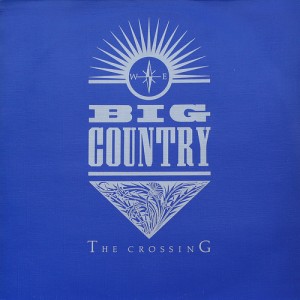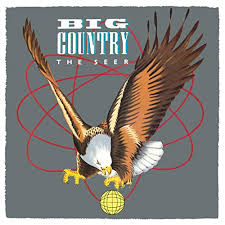In A Big Country - the EBow and “Sunday River (Ōtautahi)”
- Blair Morgan

- Jun 3
- 4 min read
Updated: Jun 4

With my new single Sunday River (Ōtautahi) out this month, I wanted to acknowledge a subtle but powerful influence on the track- the EBow and the great Scottish band Big Country.
The Ebow

The EBow (short for Electronic Bow) is a handheld electronic device invented by Greg Heet in the mid-1970s. Designed for use with electric guitars, it uses an electromagnetic field to vibrate the guitar string, creating sustain and a violin or synth-like tone without plucking or picking.
The EBow became a cult favorite among guitarists seeking atmospheric, ambient, or orchestral textures, particularly in post-punk, alternative, and progressive rock.
As someone who has used one live, they need to be "handled with care" as precise positioning is required or else the sound when engaging with your electric guitar pick ups can suddenly "take off" and become a distorted mess.
For me, using the EBow always calls back to the great Big Country, who made it a part of their signature sound.
The Virtuosos of Big Country
Big Country were more than just a band with a distinct sound however , they were a group of virtuosos. Stuart Adamson, the frontman and primary songwriter, was often called the “Scottish Hendrix,” and for good reason. His guitar playing was passionate, melodic, and deeply rooted in Celtic tradition, while still firmly rock. He honed his chops in the iconic band The Skids during the late 70's.
The rhythm section was no less impressive. Tony Butler on bass and Mark Brzezicki on drums were already seasoned pros when Big Country recorded their first album "The Crossing". Both had worked with Pete Townshend on his solo albums (Empty Glass and All the Best Cowboys Have Chinese Eyes), bringing an intuitive musicality and energy that would become foundational to Big Country’s sound. This can't have been an easy gig considering Townshend's physical & mental state at the time. (post Who drummer Keith Moon passing away and with Townshend spiralling into various addictions).
A Discography of Grit and Grandeur
Any analysis of the band must concentrate on the combined punch of the the first three albums:
The Crossing (1983)
Their debut featured the iconic “In a Big Country,” “Fields of Fire,” and “Chance.” It established their sonic identity: guitars that rang like bagpipes, lyrics of hope and hardship, and a Scottish soul equivalent to how Van Morrison was grounded across the Irish Sea. EBow pick: look no further than the long intro to "Lost Patrol," where Adamson carves melodic lines with multiple EBow parts across a digital delay infused 2nd guitar part with Butler and Brzizicki building to a furious opening (repeated again 2mins & 40 secs in).
Steeltown (1984)
My personal favourite, Steeltown is a raw, politically charged album steeped in working-class struggle and disillusionment. Produced again by Steve Lillywhite, it’s dense, powerful, and deeply moving. If you only ever need to hear three Big Country Songs the trifecta of the single "East of Eden", the tile track "Steeltown" “Where the Rose Is Sown,” from the opening side would serve the purpose.
EBow pick: Steeltown is marked by a wall of guitar production with Lillywhite layering guitar part over guitar part reminiscent of a Phil Spector "wall of sound". In amongst the guitar murkiness however you can clearly hear Adamson fire up an EBow in the breakdown of "Where the Rose is Sown."
The Seer (1986) The band moved away from Steve Lillywhite and , in a left field move chose Sade's producer Robin Millar. With guest vocals by Kate Bush on the title track, this album saw the band broaden their horizons. “Look Away” was the big hit, but there’s a mystical thread running through the album.
EBow pick: the last track on side one Eiledon could be a soundtrack to a medieval Celtic TV series , with the atmospheric intro . Adamson again builds an EBow melodic line extending into the verse and repeats it for the outro.
Subsequent to the late ’80s and ’90s albums the band shifted styles and the wider music scene moved further away via the likes of grunge . However Adamson still wrote some compelling songs. The Buffalo Skinners (1993) is worth a revisit for its stripped-down urgency, not an EBow in sight by this time.
Seeing Big Country Live (Post-Adamson & Butler)

I’ve been lucky enough to see Big Country twice in the last eight years—with Mark Brzezicki still commanding the drums and Bruce Watson (the band’s other original guitarist) leading the charge with his son Jamie. It’s a heartfelt tribute, and while no one can replace Stuart Adamson (losing his battle to addiction tragically at age 43 in 2001), these shows still channel something of the original fire. The crowd knew the difference, but also the importance of keeping the songs alive.

Still, there’s no denying that the post-Adamson version of the band is like one of their own songs “Just a Shadow”. The original lineup burned bright, and Adamson & Butler's absence (Butler retired from music in 2012) are felt in every note. But the music always endures.













Comments